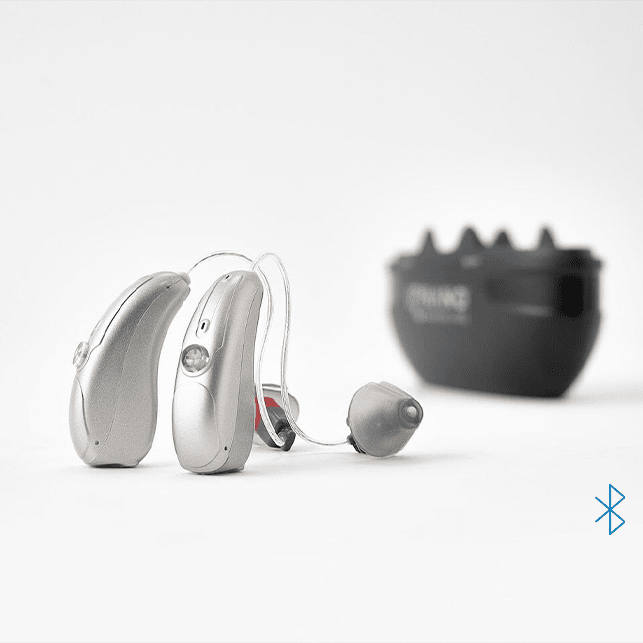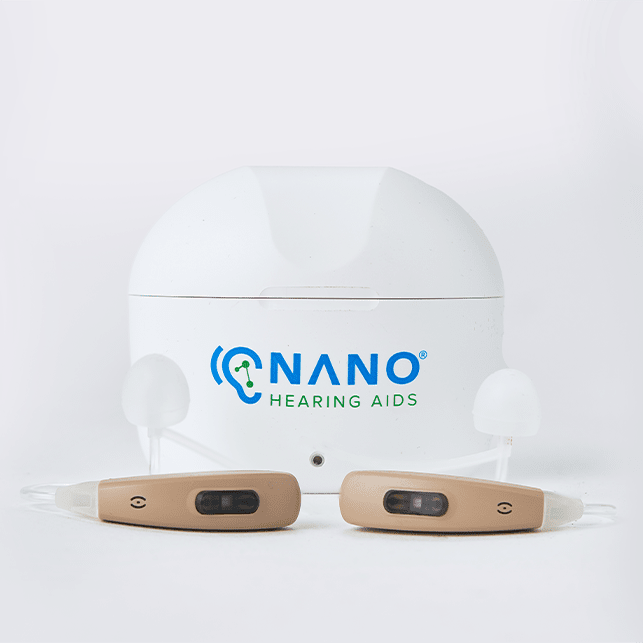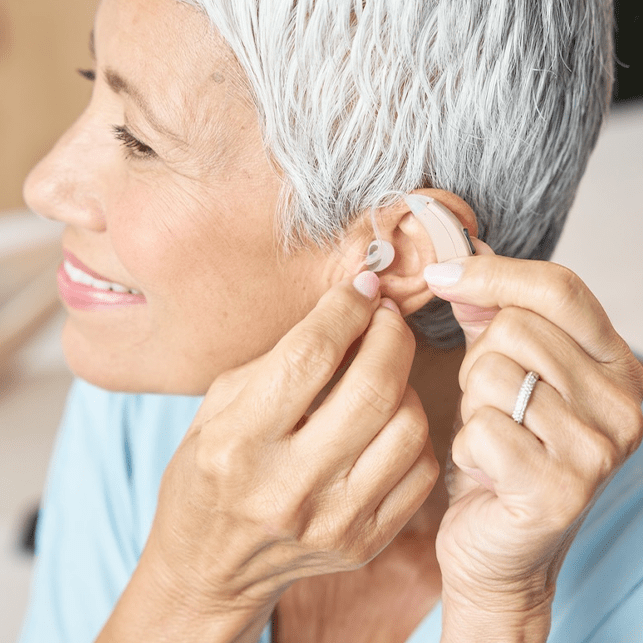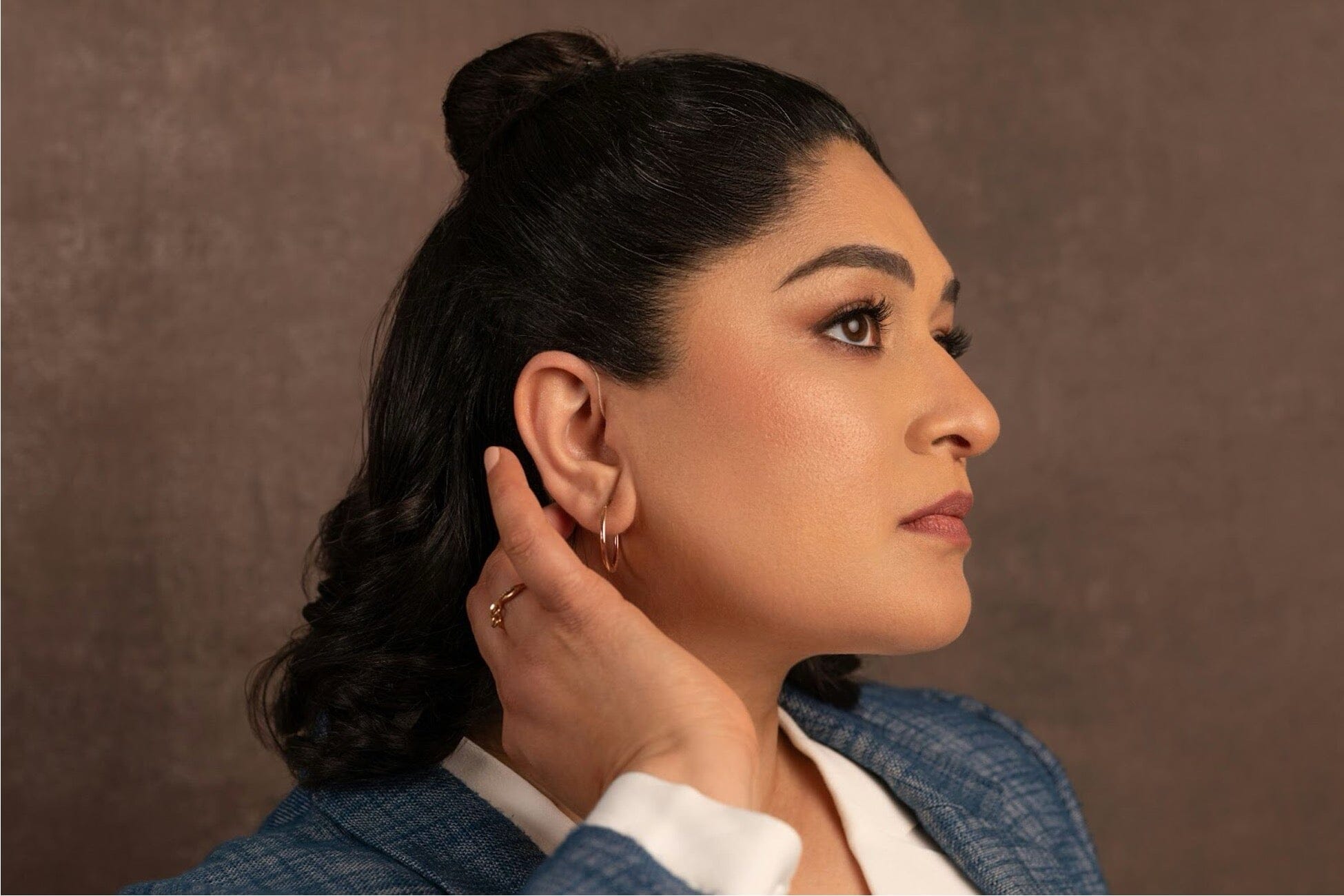Key Takeaways
- BTE hearing aids fit behind the ear and have a tube that directs sound into the ear canal.
- Proper handling and maintenance are essential for optimal performance and longevity of your hearing aids.
- Following specific steps can make putting on and removing BTE hearing aids easier.
- Daily care and cleaning are essential to avoid common issues and ensure clear sound quality.
- Nano's OTC hearing aids, including our First Ear Plus BTE model, are designed to be easy to put on and remove.
Nano Hearing Aids
are FDA-registered, Class I devices. These OTC hearing aids are designed for individuals over 18 years of age with perceived mild to moderate hearing impairment. Nano won the Top ENT Solution Provider 2023, has 24/7 customer care, and has an affordable price compared to others.
Putting On and Removing Behind-The-Ear (BTE) Hearing Aids
BTE hearing aidsconsist of several key components:
- An earmold that fits snugly inside the ear canal
- A tube that connects the earmold to the main body of the hearing aid
- An earhook that rests comfortably behind the ear
- A battery compartment that powers the device
Steps to Put On a BTE Hearing Aid
1. Gather Necessary Supplies:
- Your BTE hearing aid
- A clean, dry surface
- A mirror (optional)
- A hearing aid dryer for moisture control (optional)
2. Positioning the Hearing Aid Behind the Ear:
- Hold the hearing aid by the earhook.
- Gently place the earmold into your ear canal—wiggle slightly for a snug fit.
- The hearing aid should rest comfortably behind your ear.
3. Securing the Hearing Aid in Place:
- Adjust the earhook so it sits securely behind your ear.
- Ensure the tubing is not twisted or kinked, as this can affect sound quality.
4. Adjusting for Comfort and Fit:
- Check that the hearing aid feels comfortable.
- If it feels too tight or causes discomfort, adjust the earmold or consult your audiologist for a better fit.
Steps to Remove a BTE Hearing Aid
1. Removing the Earmold:
- Gently pull the earmold out of your ear canal—do this slowly to avoid discomfort.
2. Safely Detaching the Hearing Aid:
- Lift the earhook off your ear carefully.
- Avoid pulling on the tubing or the hearing aid itself—use a gentle upward motion to release the earhook.
3. Proper Storage After Removal:
- Place the hearing aid in its designated case to protect it from dust, moisture, and physical damage.
- If available, use a hearing aid dryer to remove any residual moisture, especially after being in a humid environment.
Common Mistakes to Avoid
1. Forcing the Device into the Ear:
- Avoid forcing the hearing aid into your ear—this can cause discomfort or damage to the ear canal.
- Gently wiggle the earmold until it fits comfortably.
- If you experience pain, consult your audiologist for a better fit.
2. Neglecting to Clean the Device Regularly:
- Clean your hearing aids daily to prevent earwax and debris from affecting performance.
- Use a soft, dry cloth to wipe down the earmold and tubing.
- Use a small brush to remove debris from the openings.
3. Ignoring Battery Compartment Issues:
- Regularly check the battery compartment for signs of corrosion or damage.
- Replace batteries regularly—store spare batteries in a cool, dry place.
- For rechargeable batteries, follow the manufacturer's charging guidelines to ensure optimal battery life.
Before using your BTE hearing aid, ensure it is fully charged to maximize performance throughout the day.
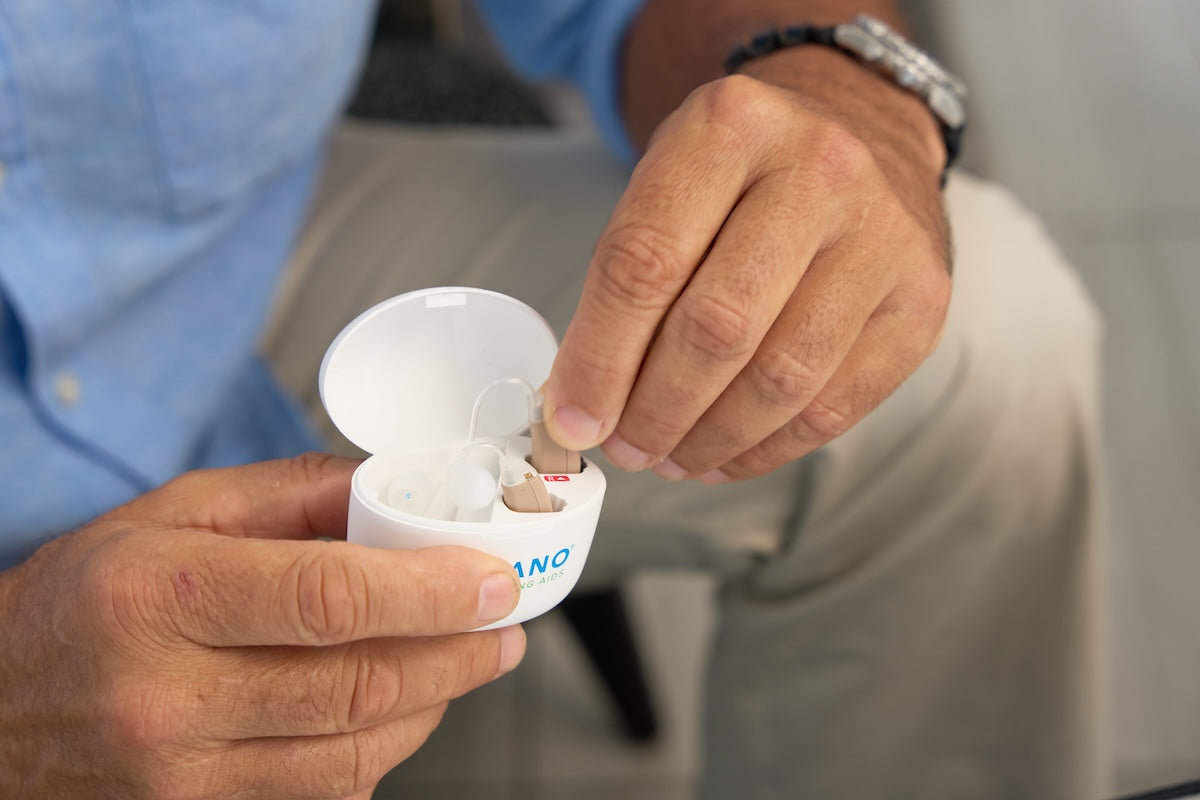
Daily Care and Maintenance Tips
1. Cleaning the Earmold and Tubing:
- Wipe down the earmold and tubing daily with a soft, dry cloth.
- For a more thorough clean, use non-alcohol-based wipes.
- Avoid water or cleaning agents to prevent damage to the electronics.
2. Checking for Any Damages:
- Inspect your hearing aids daily for cracks, loose tubing, or any other visible damage.
- If you notice anything unusual, contact your audiologist for a professional inspection.
3. Battery Management Practices:
- Keep spare batteries on hand and replace them as needed.
- Ensure rechargeable batteries are fully charged before use.
- Avoid exposing batteries to extreme temperatures to maintain their lifespan and performance.
Signs That Your Hearing Aid Needs Professional Attention
- Experiencing Unusual Sounds: Buzzing or static might indicate issues with the microphone or internal components.
- Discomfort or Pain While Wearing: If your hearing aid causes discomfort or pain, it could be due to an ill-fitting earmold or a need for adjustment.
- Noticeable Wear and Tear: Visible damage, such as cracks or broken tubing, can impact your hearing aid's performance.
How Nano Hearing Aids Can Help
Always store your BTE hearing aids in their protective case to prevent damage and extend their lifespan.
At Nano Hearing Aids, we focus on delivering quality hearing solutions that are easy to use. With over seven years of experience, our FDA-registered, Class I OTC hearing aids, including the First Ear Plus BTE model, are beginner-friendly and easy to maintain.
Our First Ear Plus BTE model ensures a nearly invisible fit behind the ear and has simple rocker switch controls for easy adjustments. With 2 listening programs, noise reduction, and feedback management, these hearing aids offer quality sound at an affordable price.
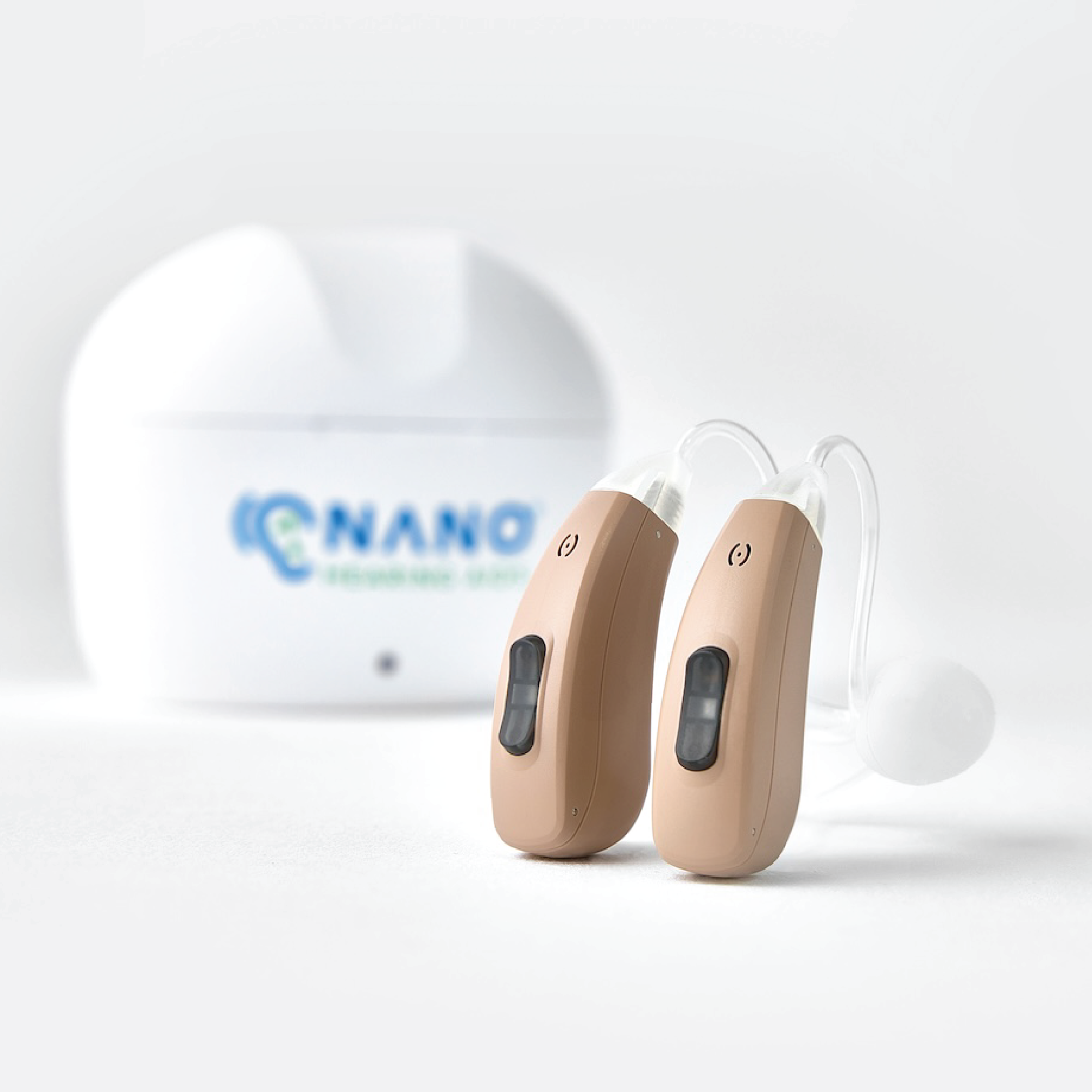
Frequently Asked Questions (FAQs)
How do I know which hearing aid is for the left or right ear?
Most hearing aids are marked with a small "L" or "R." The earmold for each ear is also shaped differently to fit the contours of your ear canal—if unsure, consult your audiologist.
What should I do if my hearing aid is uncomfortable?
Check the fit of the earmold; it might need adjustment. Ensure there are no obstructions or debris in the earmold or tubing. Your hearing aid should never cause pain or significant discomfort—seek professional advice if it does.
How often should I clean my BTE hearing aid?
Clean your hearing aid daily to prevent the buildup of earwax and debris.
What is the best way to store my hearing aid when not in use?
Store your hearing aid in its designated case in a cool, dry place. Use a hearing aid dryer to remove any residual moisture.
How can I extend the battery life of my hearing aid?
Turn off the device when not in use. Store spare batteries in a cool, dry place. Follow the manufacturer's guidelines for charging if using rechargeable batteries.
Why should I choose Nano OTC Hearing Aids?
All our Nano hearing aids are designed to be easy to use, along with being affordable and accessible over the counter. The First Ear Plus BTE model, for example, has easy-to-use rocker switch controls, up to 20 hours of listening time per charge, and noise reduction and feedback management technology for sound clarity.

